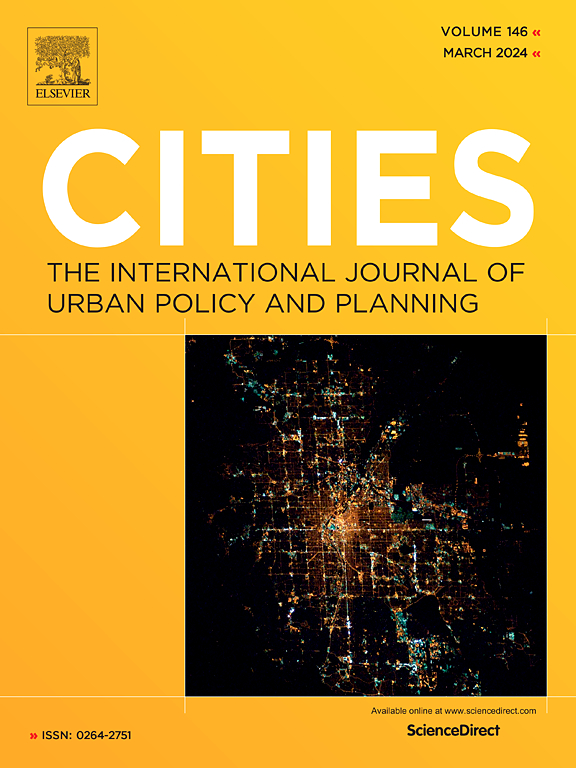网约车与地铁竞争合作关系建模与应用
IF 6.6
1区 经济学
Q1 URBAN STUDIES
引用次数: 0
摘要
网约车(ORH)的快速发展引发了一场持续的学术辩论,即它是取代公共交通还是补充公共交通。本研究通过分析中国滴滴出行平台提供的88万ORH轨迹数据,考察了ORH与地铁系统之间的关系,从而为这一争论做出了贡献。通过对起点-终点(OD)点与地铁站点之间空间关系的研究,将上下班出行分为地铁竞争出行(SCT)、地铁延伸出行(SET)和地铁未服务出行(SUT)三种模式。利用多尺度地理加权回归分析,探讨了建筑环境对这三种模式的影响机制及其空间效应。研究结果表明,SUT、SCT和SET模式与建筑环境之间的关系存在显著的空间异质性。购物服务、景点和公交站点密度等因素对ORH出行量有积极影响。此外,SUT模式受住宿和医疗服务的影响更大,而SCT模式也受住宿服务、休闲、娱乐和公司机构的影响。住宿服务和企业机构对SET模式也有很大的影响。此外,研究表明,ORH服务往往是对地铁的补充,而不是直接与地铁竞争。本文章由计算机程序翻译,如有差异,请以英文原文为准。
Modeling and application of the competition and cooperation relationship between online ride-hailing and subways
The rapid growth of online ride-hailing (ORH) has sparked an ongoing academic debate about whether it replaces or complements public transit. This study contributes to this debate by examining the relationship between ORH and subway systems through the analysis of 880,000 ORH trajectory data provided by China's Didi Chuxing platform. By investigating the spatial relationship between ORH origin-destination (OD) points and subway stations, ORH trips are categorized into three modes: Subway-Competitive Trips (SCT), Subway-Extending Trips (SET), and Subway-Unserved Trips (SUT). The impact mechanisms of the built environment on these three modes and their spatial effects are then explored using a multiscale geographically weighted regression analysis. The findings reveal significant spatial heterogeneity in the relationships between the SUT, SCT, and SET modes and the built environment. Factors such as shopping services, scenic attractions, and bus stop density positively influence ORH trip volumes. Additionally, the SUT mode is more strongly impacted by residential and healthcare services, whereas the SCT mode is also influenced by accommodation services, leisure, entertainment, and corporate establishments. Accommodation services and corporate establishments have a strong influence on the SET mode as well. Moreover, the study suggests that ORH services tend to complement subways rather than directly compete with them.
求助全文
通过发布文献求助,成功后即可免费获取论文全文。
去求助
来源期刊

Cities
URBAN STUDIES-
CiteScore
11.20
自引率
9.00%
发文量
517
期刊介绍:
Cities offers a comprehensive range of articles on all aspects of urban policy. It provides an international and interdisciplinary platform for the exchange of ideas and information between urban planners and policy makers from national and local government, non-government organizations, academia and consultancy. The primary aims of the journal are to analyse and assess past and present urban development and management as a reflection of effective, ineffective and non-existent planning policies; and the promotion of the implementation of appropriate urban policies in both the developed and the developing world.
 求助内容:
求助内容: 应助结果提醒方式:
应助结果提醒方式:


